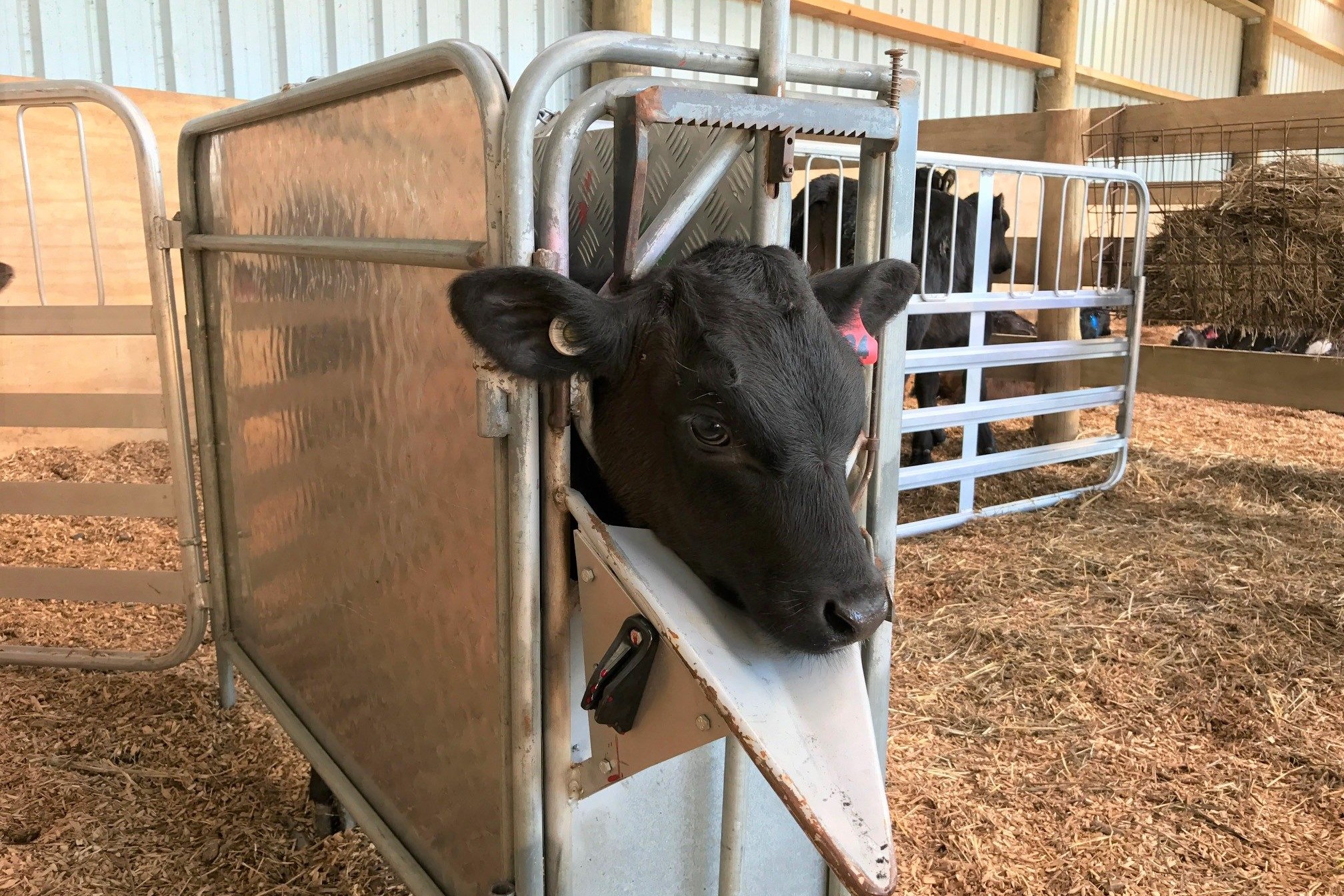Why do some cows have horns? Most beef breeds in developed countries have bred the horns out. Dairy breeds in general have not, because of a genetic link between horns and milk production. This means a small number of sheep and beef farms have crossbred cows who still throw calves with horns. Recent animal welfare regulation changes have affected this small number of farmers.
The regulations now say that cattle of any age cannot be disbudded or dehorned without pain relief. Effective pain relief means that the animal will not feel it. Think of the difference between having a tooth pulled with a nerve block or without. By injecting local anaesthetic directly onto the nerve, the cow can’t feel its horns at all and the job becomes more pleasant for everyone. Farmers can do the disbudding themselves if they are trained and accredited by a vet to place the anaesthetic exactly in the right place on the nerve. Otherwise, this is a job for the vet.
At a young age the horn buds ‘float’ over the skull bone. At this age the germinal cells that the horn grows from can be destroyed by burning and the horns will never grow back. In an adult animal, those germinal cells are deep in the skull and no matter how deep you cut the base of the horn, horns will still grow back. That is the difference between disbudding and dehorning.
So, what are your option for the unpolled members of your herd?
1. Do nothing. There is a risk with this option of cattle injuring others with their horns. They may also be unable to be transported. The regulations used to say that horned cattle could not be transported if the horns were longer than the ears, now they say for transport the horns must not be able to injure themselves or another animal.There is also a risk of a horn curling around and growing into the face, these need to be removed before the tip of the horn goes through the skin.
2. Get them disbudded as calves. Those tiny horn buds that you can barely feel and haven’t yet broken the skin can be burnt off under local and general anaesthetic and then they don’t grow back. Dairy farmers get their calves done at four to six weeks old. On a sheep and beef farm this means getting them done at calf marking, not at weaning.
3. Get them dehorned just prior to transport. Legally, you can’t transport them within seven days of dehorning and best practice is to wait three weeks. Removing the horns at this age is a slower and harder job, and your vet will thank you for good yards and a safe head bail. The horns are likely to grow back (which may or may not be an issue).
4. Sell all your horned cattle and buy polled ones. With the change in societal expectation, and the extra cost of pain relief, this genetic change will probably happen in the dairy breeds too. The sooner, the better.
- Sara Sutherland is a veterinarian for Veterinary Services Wairarapa.





